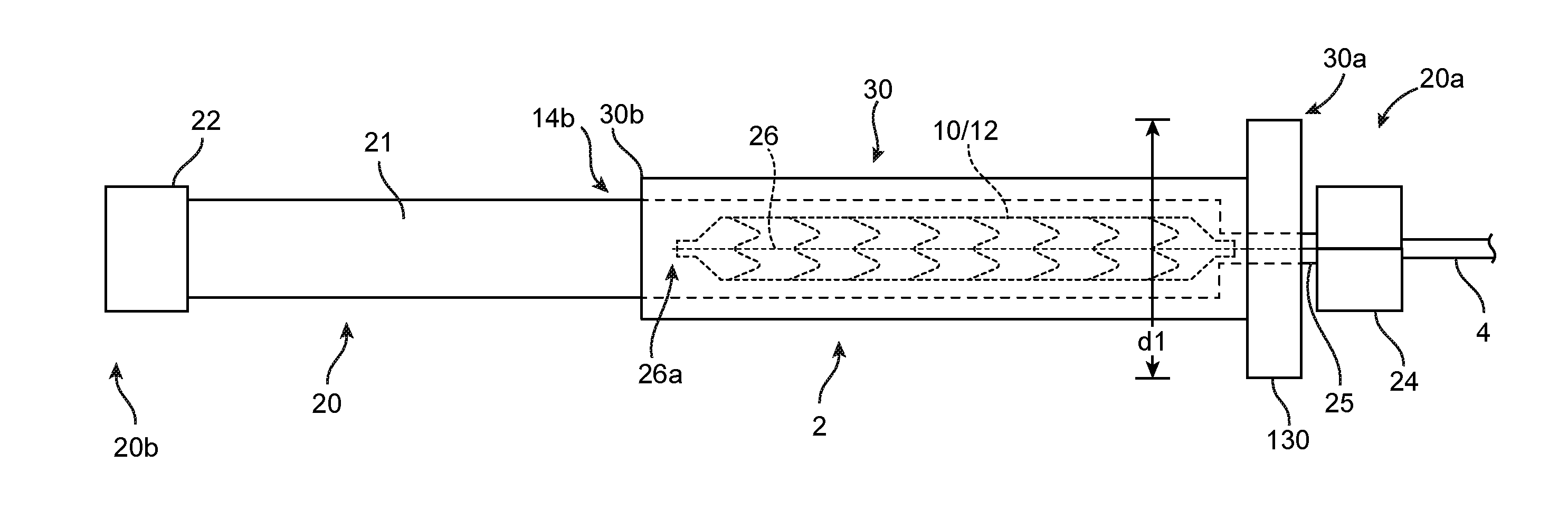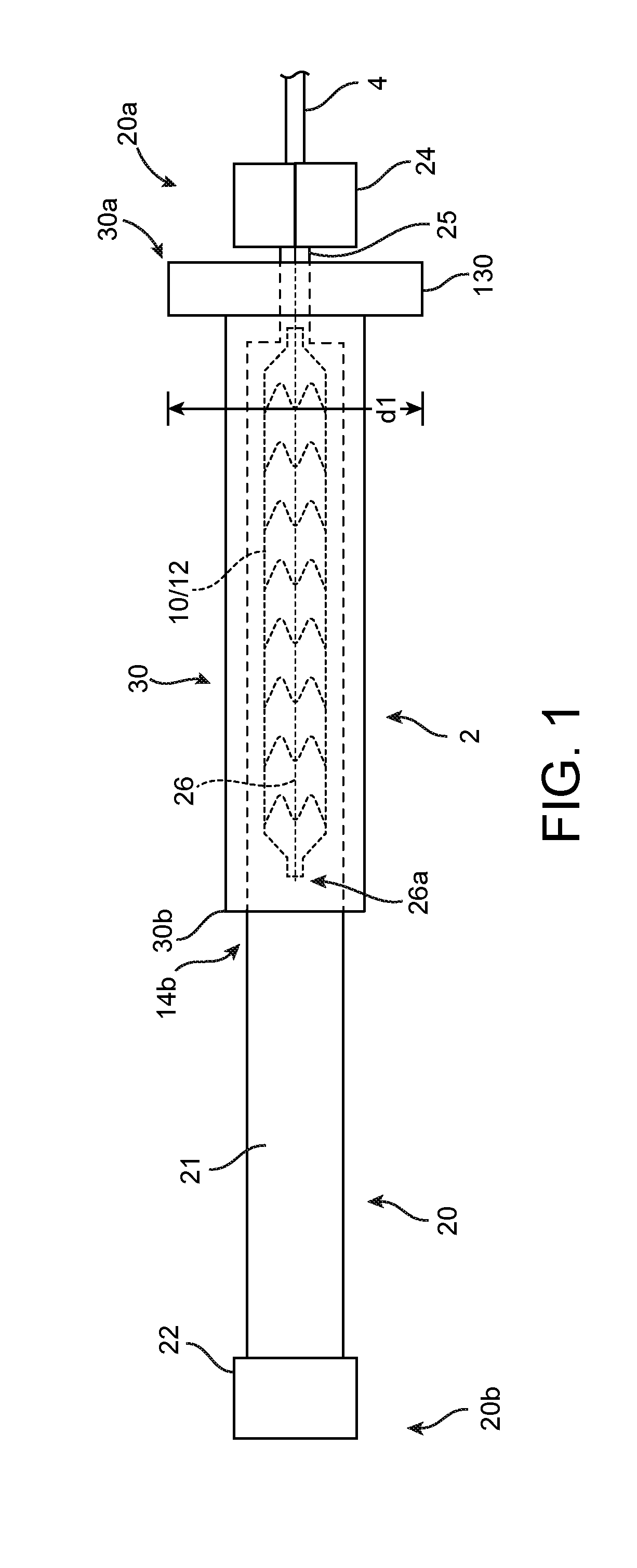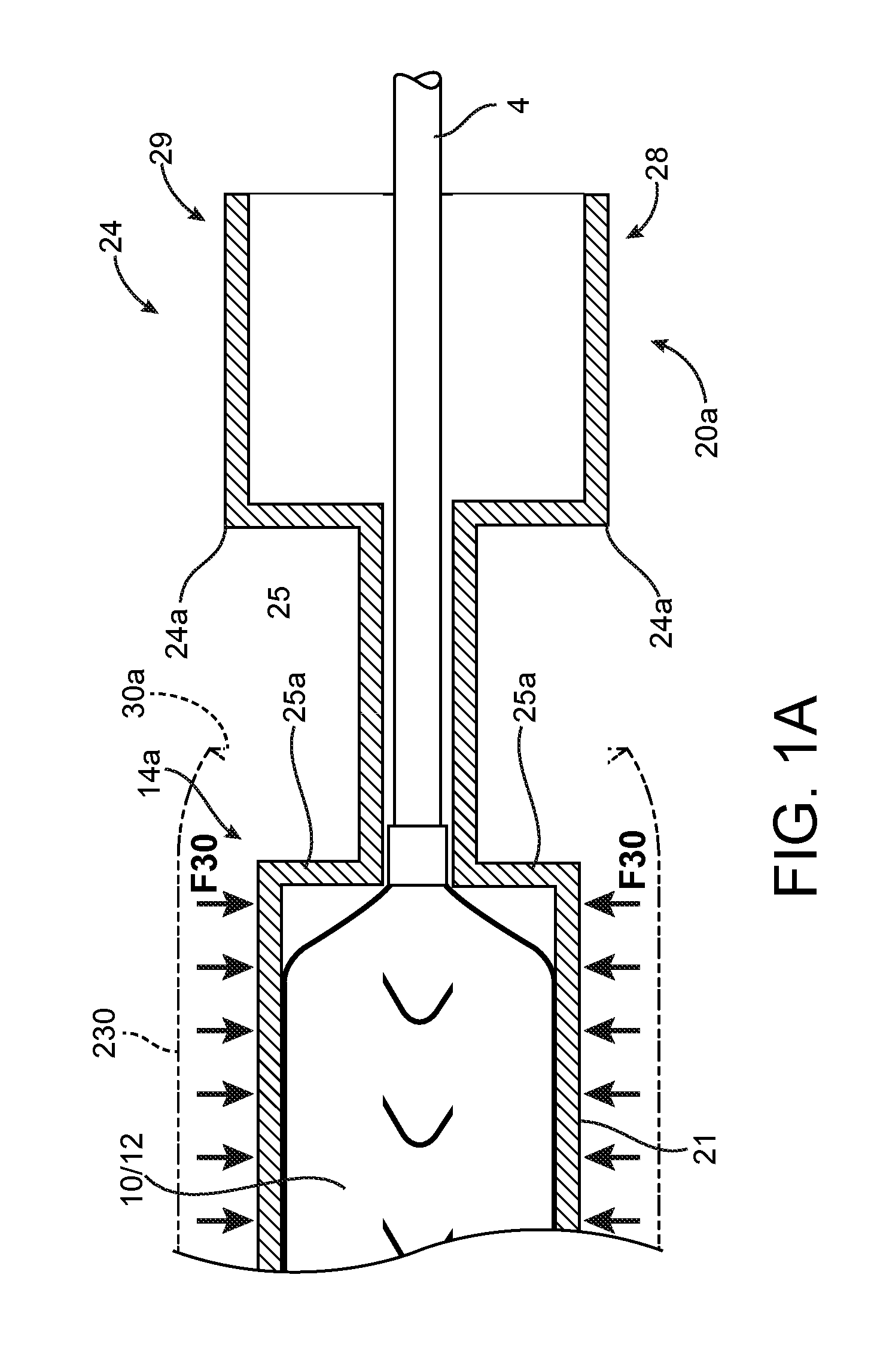Protective sheath assembly for a polymer scaffold
- Summary
- Abstract
- Description
- Claims
- Application Information
AI Technical Summary
Benefits of technology
Problems solved by technology
Method used
Image
Examples
Embodiment Construction
[0071]For purposes of this disclosure, the following terms and definitions apply:
[0072]The term “about” means 20%, 10%, 5%, 2% or 1% less or more than a stated value, a range or each endpoint of a stated range, or a one-sigma variation from a stated mean value. The term “substantially” refers to at least a 30%, 20%, 10%, 5%, 2% or 1% deviation from a value or range. For example, d1 substantially less than d2 means d1 is at least 30%, 20%, 10%, 5%, 2% or 1% less than d2.
[0073]The term “rigid” is a relative term used to describe something that is substantially stiffer than some other thing. For example, a first sheath or tube that is radially rigid, rigid in the radial direction, or simply rigid as compared to a second sheath or tube means that the first sheath / tube is incompressible compared to the second sheath, or essentially does not deform when an external, radially compressive force or pinching force is applied as compared to the second sheath, for the same applied load.
[0074]“I...
PUM
| Property | Measurement | Unit |
|---|---|---|
| Fraction | aaaaa | aaaaa |
| Fraction | aaaaa | aaaaa |
| Fraction | aaaaa | aaaaa |
Abstract
Description
Claims
Application Information
 Login to View More
Login to View More - R&D
- Intellectual Property
- Life Sciences
- Materials
- Tech Scout
- Unparalleled Data Quality
- Higher Quality Content
- 60% Fewer Hallucinations
Browse by: Latest US Patents, China's latest patents, Technical Efficacy Thesaurus, Application Domain, Technology Topic, Popular Technical Reports.
© 2025 PatSnap. All rights reserved.Legal|Privacy policy|Modern Slavery Act Transparency Statement|Sitemap|About US| Contact US: help@patsnap.com



